-
 Bitcoin
Bitcoin $83,645.2925
2.13% -
 Ethereum
Ethereum $1,810.3926
2.44% -
 Tether USDt
Tether USDt $0.9997
-0.01% -
 XRP
XRP $2.1625
6.88% -
 BNB
BNB $597.0728
1.93% -
 Solana
Solana $120.3405
5.84% -
 USDC
USDC $1.0000
-0.01% -
 Dogecoin
Dogecoin $0.1697
5.76% -
 Cardano
Cardano $0.6612
4.89% -
 TRON
TRON $0.2366
-0.18% -
 Chainlink
Chainlink $12.9367
4.36% -
 UNUS SED LEO
UNUS SED LEO $8.9186
-4.81% -
 Toncoin
Toncoin $3.2881
-3.62% -
 Stellar
Stellar $0.2568
1.07% -
 Avalanche
Avalanche $18.2513
3.22% -
 Sui
Sui $2.2464
5.05% -
 Shiba Inu
Shiba Inu $0.0...01235
3.20% -
 Hedera
Hedera $0.1624
3.07% -
 Litecoin
Litecoin $83.6396
2.15% -
 Polkadot
Polkadot $3.9903
0.78% -
 Bitcoin Cash
Bitcoin Cash $303.0186
2.29% -
 MANTRA
MANTRA $6.2191
-0.79% -
 Bitget Token
Bitget Token $4.5070
0.81% -
 Dai
Dai $1.0001
0.01% -
 Ethena USDe
Ethena USDe $0.9991
-0.05% -
 Pi
Pi $0.7573
46.01% -
 Monero
Monero $217.7441
1.11% -
 Hyperliquid
Hyperliquid $11.9838
7.25% -
 Uniswap
Uniswap $5.9118
4.14% -
 OKB
OKB $51.3601
9.71%
How to trade spot on Huobi
To trade spot on Huobi, set up an account, complete KYC, deposit funds, and use the interface to buy and sell cryptocurrencies at current market prices.
Apr 04, 2025 at 07:43 am
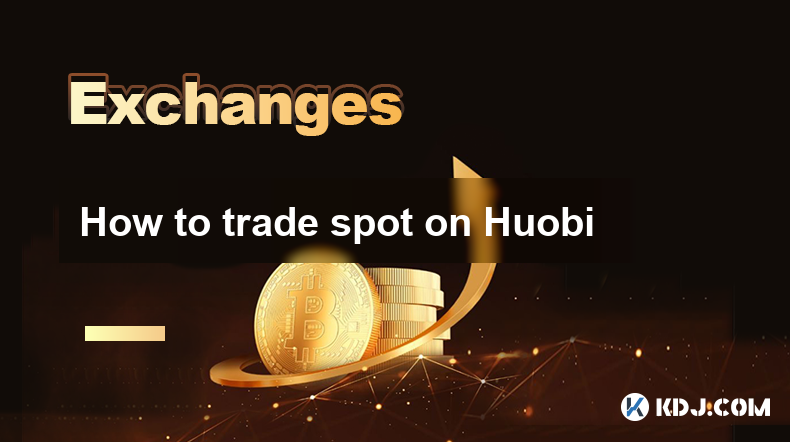
Trading spot on Huobi is an essential skill for cryptocurrency enthusiasts looking to buy and sell digital assets directly. Spot trading involves exchanging one cryptocurrency for another at the current market price. To get started on Huobi, you'll need to create an account, complete the necessary verifications, and deposit funds. Once your account is set up, you can navigate to the spot trading section, where you'll find a variety of trading pairs. Understanding the interface, setting up your trading strategy, and managing your orders are crucial steps to becoming proficient in spot trading on Huobi.
Huobi, one of the leading cryptocurrency exchanges, offers a user-friendly platform for spot trading. Whether you're a beginner or an experienced trader, Huobi provides the tools and resources needed to execute trades efficiently. In this guide, we'll walk you through the process of trading spot on Huobi, from setting up your account to executing your first trade. We'll also cover advanced features and tips to help you maximize your trading potential.
Setting Up Your Huobi Account
Before you can start trading spot on Huobi, you need to set up an account. Here's how to do it:
- Visit the Huobi Website: Go to the official Huobi website and click on the "Sign Up" button.
- Enter Your Details: Fill in your email address and create a strong password. Make sure to use a secure email address that you have access to.
- Verify Your Email: You'll receive an email from Huobi with a verification link. Click on the link to verify your email address.
- Complete KYC Verification: To comply with regulatory requirements, you'll need to complete the Know Your Customer (KYC) process. This involves submitting a government-issued ID and a selfie for verification.
- Deposit Funds: Once your account is verified, you can deposit funds into your Huobi wallet. You can deposit cryptocurrencies or fiat currencies, depending on your location and the available options.
Navigating the Huobi Spot Trading Interface
After setting up your account, you'll need to familiarize yourself with the Huobi spot trading interface. Here's a breakdown of the key components:
- Trading Pairs: On the left side of the screen, you'll see a list of available trading pairs. You can search for specific pairs or browse through the list to find the one you want to trade.
- Order Book: The order book displays the current buy and sell orders for the selected trading pair. It shows the price and volume of each order, helping you gauge market sentiment.
- Trading Chart: The trading chart provides a visual representation of the price movement over time. You can customize the chart to display different time frames and technical indicators.
- Order Entry: The order entry section allows you to place buy and sell orders. You can choose between market orders, which execute at the current market price, and limit orders, which execute at a specified price.
- Order History: The order history tab shows all your past and current orders, allowing you to track your trading activity.
Executing Your First Spot Trade on Huobi
Now that you're familiar with the Huobi spot trading interface, it's time to execute your first trade. Here's a step-by-step guide:
- Select a Trading Pair: Choose the trading pair you want to trade. For example, if you want to buy Bitcoin with USDT, select the BTC/USDT pair.
- Analyze the Market: Use the trading chart and order book to analyze the market. Look for trends, support and resistance levels, and other indicators that can help you make an informed decision.
- Place an Order: Decide whether you want to place a market order or a limit order. For a market order, simply enter the amount you want to buy or sell, and click "Buy" or "Sell." For a limit order, enter the price at which you want to execute the trade, along with the amount, and click "Buy" or "Sell."
- Monitor Your Order: Once your order is placed, monitor it in the order history tab. If it's a limit order, it will remain open until it's filled or canceled. If it's a market order, it will execute immediately at the current market price.
- Manage Your Position: After your trade is executed, you'll have a position in the trading pair. You can choose to hold onto it, sell it for a profit, or cut your losses if the market moves against you.
Advanced Spot Trading Strategies on Huobi
As you gain more experience with spot trading on Huobi, you can explore advanced strategies to enhance your trading performance. Here are some strategies to consider:
- Dollar-Cost Averaging (DCA): DCA involves investing a fixed amount of money at regular intervals, regardless of the market price. This strategy can help reduce the impact of volatility and potentially lead to better long-term results.
- Scalping: Scalping is a short-term trading strategy that involves making multiple small trades throughout the day to capitalize on small price movements. It requires quick decision-making and a keen eye for market trends.
- Swing Trading: Swing trading involves holding positions for several days to weeks to take advantage of medium-term price movements. This strategy requires a good understanding of technical analysis and market trends.
- Arbitrage: Arbitrage involves buying a cryptocurrency on one exchange and selling it on another at a higher price. This strategy can be profitable but requires quick execution and access to multiple exchanges.
Managing Risk and Maximizing Profits on Huobi
Effective risk management is crucial for successful spot trading on Huobi. Here are some tips to help you manage risk and maximize your profits:
- Set Stop-Loss Orders: A stop-loss order automatically sells your position if the price drops to a certain level, helping you limit your losses. Always set a stop-loss order to protect your capital.
- Use Take-Profit Orders: A take-profit order automatically sells your position when the price reaches a certain level, allowing you to lock in profits. Use take-profit orders to secure gains and avoid the temptation to hold onto a position for too long.
- Diversify Your Portfolio: Don't put all your eggs in one basket. Diversify your portfolio by trading multiple cryptocurrencies and trading pairs. This can help spread your risk and increase your chances of success.
- Stay Informed: Keep up with the latest news and developments in the cryptocurrency market. Stay informed about regulatory changes, market trends, and other factors that can impact prices. Use this information to make informed trading decisions.
Common Questions About Trading Spot on Huobi
Q: What is spot trading on Huobi?
A: Spot trading on Huobi involves buying and selling cryptocurrencies at the current market price. It's the most straightforward way to trade digital assets, allowing you to exchange one cryptocurrency for another instantly.
Q: How do I deposit funds into my Huobi account?
A: To deposit funds into your Huobi account, go to the "Wallet" section, select the cryptocurrency or fiat currency you want to deposit, and follow the instructions to generate a deposit address. Send your funds to the provided address, and they should appear in your account once the transaction is confirmed.
Q: Can I trade spot on Huobi without completing KYC verification?
A: No, you need to complete the KYC verification process to trade spot on Huobi. This is a regulatory requirement to ensure the security and integrity of the platform.
Q: What are the fees for spot trading on Huobi?
A: Huobi charges a maker fee of 0.2% and a taker fee of 0.2% for spot trading. However, these fees can be reduced by holding Huobi Token (HT) or by trading in higher volumes.
Q: How can I withdraw funds from my Huobi account?
A: To withdraw funds from your Huobi account, go to the "Wallet" section, select the cryptocurrency or fiat currency you want to withdraw, and enter the amount and destination address. Follow the instructions to complete the withdrawal process. Note that there may be withdrawal fees depending on the asset.
Q: What are the benefits of using Huobi for spot trading?
A: Huobi offers a user-friendly interface, a wide range of trading pairs, competitive fees, and advanced trading tools. Additionally, Huobi provides strong security measures and customer support, making it a reliable platform for spot trading.
Q: Can I use leverage for spot trading on Huobi?
A: No, leverage is not available for spot trading on Huobi. Leverage is typically used in margin trading, which is a different type of trading offered on the platform.
Q: How can I improve my spot trading skills on Huobi?
A: To improve your spot trading skills on Huobi, practice regularly, stay informed about market trends, and use the platform's educational resources. Consider joining trading communities and forums to learn from experienced traders and share insights.
Q: What should I do if I encounter issues while trading spot on Huobi?
A: If you encounter issues while trading spot on Huobi, you can contact their customer support team through the platform's help center or live chat. They are available 24/7 to assist with any problems or questions you may have.
Q: Is it safe to trade spot on Huobi?
A: Yes, Huobi is considered a safe platform for spot trading. They use advanced security measures, including two-factor authentication (2FA), cold storage for funds, and regular security audits. However, always practice good security habits, such as using strong passwords and enabling 2FA, to protect your account.
Disclaimer:info@kdj.com
The information provided is not trading advice. kdj.com does not assume any responsibility for any investments made based on the information provided in this article. Cryptocurrencies are highly volatile and it is highly recommended that you invest with caution after thorough research!
If you believe that the content used on this website infringes your copyright, please contact us immediately (info@kdj.com) and we will delete it promptly.
- title: GameStop Completes $1.5B Fundraising Round to Invest in Bitcoin
- 2025-04-05 20:20:13
- South Korea's 7-Eleven stores will accept payments in the country's central bank digital currency (CBDC)
- 2025-04-05 20:20:13
- VanEck Proposes First BNB ETF in the U.S.
- 2025-04-05 20:15:12
- South Korean company launches 'political meme coins' to gauge public sentiment during impeachment trial
- 2025-04-05 20:15:12
- Despite Market Slowdown, DeFi Lending Continues to Be One of the Most Active App Types
- 2025-04-05 20:10:12
- The XRPTurbo presale has officially sold out, securing over 300000 XRP in under 30 days
- 2025-04-05 20:10:12
Related knowledge
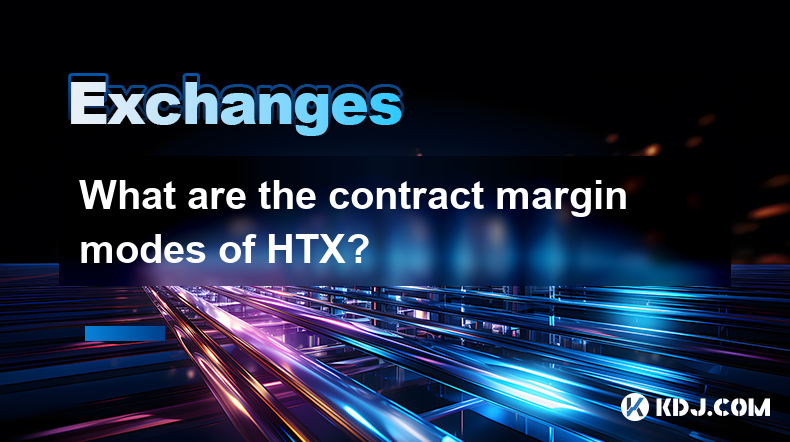
What are the contract margin modes of HTX?
Apr 04,2025 at 02:14pm
HTX, formerly known as Huobi, offers various contract margin modes to cater to the diverse needs of traders. Understanding these modes is crucial for effectively managing risk and maximizing potential returns. In this article, we will delve into the different contract margin modes available on HTX, explaining their features, benefits, and how to use the...
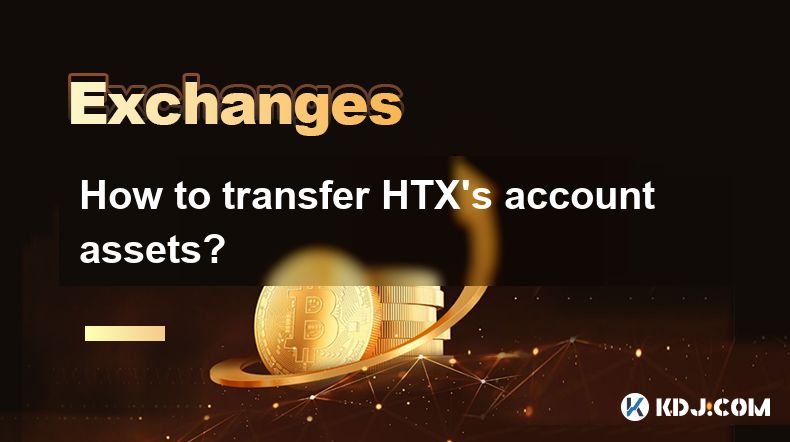
How to transfer HTX's account assets?
Apr 04,2025 at 09:28pm
Introduction to HTX and Account AssetsHTX, formerly known as Huobi, is a leading cryptocurrency exchange that offers a wide range of trading services. One of the essential functions for users is the ability to transfer assets within their HTX accounts. Whether you're moving funds between different wallets or sending assets to another user, understanding...
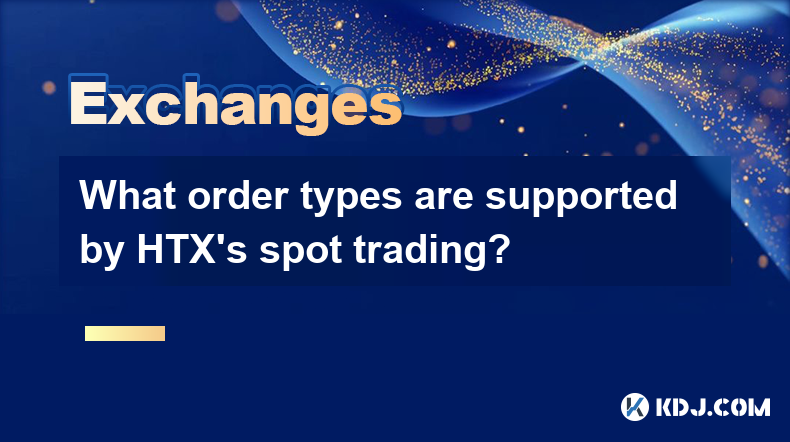
What order types are supported by HTX's spot trading?
Apr 04,2025 at 04:42am
HTX, formerly known as Huobi, is a well-established cryptocurrency exchange that offers a variety of order types for spot trading. Understanding these order types is crucial for traders looking to execute their strategies effectively. In this article, we will explore the different order types supported by HTX's spot trading platform, providing detailed ...
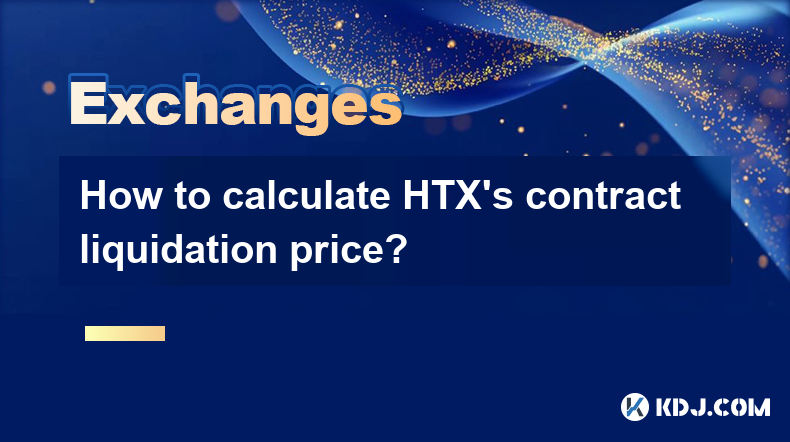
How to calculate HTX's contract liquidation price?
Apr 05,2025 at 08:07pm
Calculating the liquidation price of a contract on HTX (formerly known as Huobi) is crucial for traders to manage their risk effectively. The liquidation price is the price at which a position is automatically closed due to insufficient margin. Understanding how to calculate this price can help traders avoid unexpected liquidations and manage their posi...

How to cancel HTX's stop-profit and stop-loss orders?
Apr 03,2025 at 07:50pm
Introduction to HTX's Stop-Profit and Stop-Loss OrdersHTX, formerly known as Huobi, is a leading cryptocurrency exchange that offers a variety of trading tools to its users. Among these tools are stop-profit and stop-loss orders, which are essential for managing risk and securing profits in the volatile crypto market. These orders allow traders to set p...
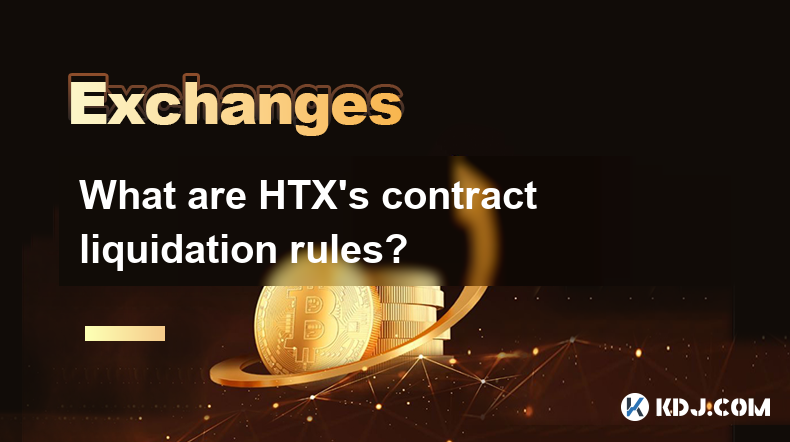
What are HTX's contract liquidation rules?
Apr 04,2025 at 10:08am
Introduction to HTX's Contract LiquidationsHTX, formerly known as Huobi, is a prominent cryptocurrency exchange known for its diverse range of trading products, including futures and options contracts. One of the critical aspects of trading on HTX is understanding the rules surrounding contract liquidations. Liquidation occurs when a trader's position i...

What are the contract margin modes of HTX?
Apr 04,2025 at 02:14pm
HTX, formerly known as Huobi, offers various contract margin modes to cater to the diverse needs of traders. Understanding these modes is crucial for effectively managing risk and maximizing potential returns. In this article, we will delve into the different contract margin modes available on HTX, explaining their features, benefits, and how to use the...

How to transfer HTX's account assets?
Apr 04,2025 at 09:28pm
Introduction to HTX and Account AssetsHTX, formerly known as Huobi, is a leading cryptocurrency exchange that offers a wide range of trading services. One of the essential functions for users is the ability to transfer assets within their HTX accounts. Whether you're moving funds between different wallets or sending assets to another user, understanding...

What order types are supported by HTX's spot trading?
Apr 04,2025 at 04:42am
HTX, formerly known as Huobi, is a well-established cryptocurrency exchange that offers a variety of order types for spot trading. Understanding these order types is crucial for traders looking to execute their strategies effectively. In this article, we will explore the different order types supported by HTX's spot trading platform, providing detailed ...

How to calculate HTX's contract liquidation price?
Apr 05,2025 at 08:07pm
Calculating the liquidation price of a contract on HTX (formerly known as Huobi) is crucial for traders to manage their risk effectively. The liquidation price is the price at which a position is automatically closed due to insufficient margin. Understanding how to calculate this price can help traders avoid unexpected liquidations and manage their posi...

How to cancel HTX's stop-profit and stop-loss orders?
Apr 03,2025 at 07:50pm
Introduction to HTX's Stop-Profit and Stop-Loss OrdersHTX, formerly known as Huobi, is a leading cryptocurrency exchange that offers a variety of trading tools to its users. Among these tools are stop-profit and stop-loss orders, which are essential for managing risk and securing profits in the volatile crypto market. These orders allow traders to set p...

What are HTX's contract liquidation rules?
Apr 04,2025 at 10:08am
Introduction to HTX's Contract LiquidationsHTX, formerly known as Huobi, is a prominent cryptocurrency exchange known for its diverse range of trading products, including futures and options contracts. One of the critical aspects of trading on HTX is understanding the rules surrounding contract liquidations. Liquidation occurs when a trader's position i...
See all articles



















































































